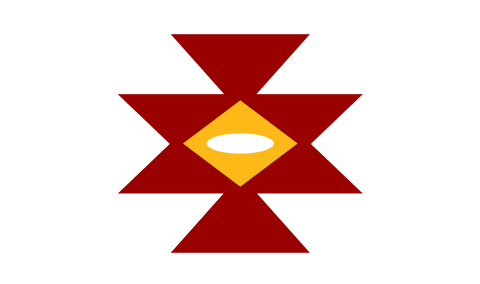Kanatitsa

The rope is a universal symbol, which for about seven thousand years has spread to different parts of the Earth, regardless of religion and state structure. The earliest dated such image was found on a clay vessel around 5300 BC.
In almost all places around the world, the figure symbolizes infinity and eternal life. Its purpose was to protect against evil forces and negative influences, and its elements bring the idea of happiness and prosperity to the owner. Rope is found on household items and fabrics that a person can easily carry with them. It is very rare to find Kanatitsa symbols on stationary objects.
The word entered the Bulgarian language from Sanskrit, and if we examine its composition in detail, we will find that the root KAN means light, shine, spark, as the first proto-Bulgarian rulers were titled. The reference to the title KANAS - supreme leader, gives us the understanding that at the root is the concept of the sun itself.
The leader always carries the feeling of the Sun - the one who has the light within himself, who with his radiation will lead his people out of darkness and difficulties. It is precisely in this sense that the understanding of SUN - LIGHT is contained in the ingredient KAN-leader.
The next part of the word - ATI in Sanskrit, is a form that expresses something quantitative - like a lot, extra, more, over . In this line of thought, it also gives a full explanation of the word ROPES , as an OVER structure on carts and trailers, by which the volume is increased for what can be stored inside. We have an old Bulgarian dialectal form that is still used for the cart or trailer attachments "ropes - wings". And here even the idea of a guide is included, because KANATI are a kind of guides that give an opportunity and an idea of where and how much to fill with content. Moreover, they not only allow us to increase the content, but also act as its guardians so that the content does not fall outside the restricted area. It is precisely in such a context that we most often find KANATICS in carpet weaving and weaving. It is used as a symbol - border, fence, guardian. It is for this reason that the belief that it has an extremely strong protective effect is preserved.
The Kanatitsa symbol is called a Star in some fabrics. There are many examples in the history of human civilization where a new star marks the birth of a great person. It is widely believed that when a person is born, somewhere in the sky his star rises. Today, the term STAR is used for popular personalities, but in ancient writings, stars are identified with deities, with angelic beings. This is why the belief that everyone is born with their star is the idea of a guardian angel that everyone has. In this line of thought, the ropes of the vezmoto appear as stars - winged angelic beings, deities, guardians - signs of happiness, longevity and protection from evil forces.
Simply put, the visual image of the Rope resembles a ribbon.
It is more than clear that the word is feminine and in its geometric structure there is a symbol for a womb. It also contains the idea of beginning, conception and birth. When the ROPE is viewed vertically, it consists of two scissors /triangles/. These are two mirrored triangles that touch at the top of the legs. Our people have called this "engagement". To become a "wedding", the triangles must be inside each other and with their vertices form a rhombus, which is the basis of the traditional family, and in the figurative language of symbols, the rhombus illustrates a womb.
In the Bulgarian tradition, with the appearance of a generation, and this is illustrated by the depiction of another smaller triangle on both sides, Kanatitsa is now called "family".
After Kanatitsa, comes Great Kanatitsa or Rod. This happens by adding two more small walkers to the main Family figure. This figure is a symbol for the growing family. When a generation has created a generation, it has accomplished its mission on Earth. Because of this, Golyama Kanatitsa is also a symbol of fertility.
The growth of the genus reached its highest point at Velika Kanatitsa. The image of Velika Kanatitsa is formed by adding two more triangles on both sides of the figure to the image of Velika Kanatitsa. This element symbolizes the genus, which has reached a unified whole at a higher level - People. Elements of which family and lineage are an integral part.
According to some researchers and ethnographers, carpet weaving (similar to weaving) and a number of other artistic crafts have preserved and reflected a rich spiritual culture coming from prehistoric times. They contain many storylines reflecting the beliefs and ideas of our ancient ancestors about the visible and invisible world. Ideas about the construction of the universe, the world of gods and people. These motifs serve as a system of communication, demarcate boundaries and maintain harmony between the realities of the so-called upper and lower worlds. What has been said so far fully represents the message or information that the string contains. It is a symbol with a particularly strong apotropaic (protective) function used by our ancestors as a means of warding off any unclean forces.
